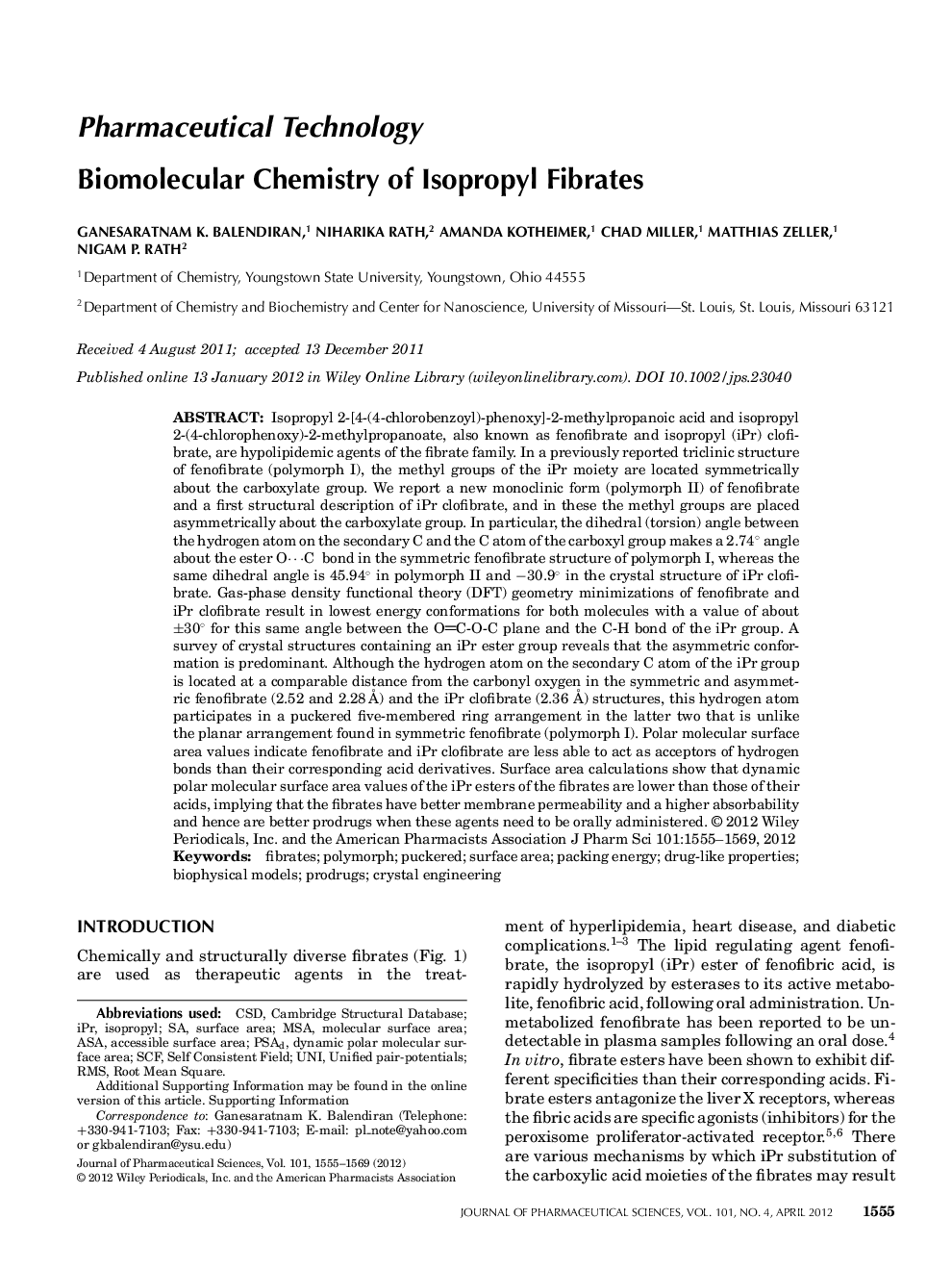| کد مقاله | کد نشریه | سال انتشار | مقاله انگلیسی | نسخه تمام متن |
|---|---|---|---|---|
| 2485856 | 1114368 | 2012 | 15 صفحه PDF | دانلود رایگان |
عنوان انگلیسی مقاله ISI
Biomolecular Chemistry of Isopropyl Fibrates
دانلود مقاله + سفارش ترجمه
دانلود مقاله ISI انگلیسی
رایگان برای ایرانیان
کلمات کلیدی
موضوعات مرتبط
علوم پزشکی و سلامت
داروسازی، سم شناسی و علوم دارویی
اکتشاف دارویی
پیش نمایش صفحه اول مقاله

چکیده انگلیسی
Isopropyl 2-[4-(4-chlorobenzoyl)-phenoxy]-2-methylpropanoic acid and isopropyl 2-(4-chlorophenoxy)-2-methylpropanoate, also known as fenofibrate and isopropyl (iPr) clofibrate, are hypolipidemic agents of the fibrate family. In a previously reported triclinic structure of fenofibrate (polymorph I), the methyl groups of the iPr moiety are located symmetrically about the carboxylate group. We report a new monoclinic form (polymorph II) of fenofibrate and a first structural description of iPr clofibrate, and in these the methyl groups are placed asymmetrically about the carboxylate group. In particular, the dihedral (torsion) angle between the hydrogen atom on the secondary C and the C atom of the carboxyl group makes a 2.74° angle about the ester O···C bond in the symmetric fenofibrate structure of polymorph I, whereas the same dihedral angle is 45.94° in polymorph II and â30.9° in the crystal structure of iPr clofibrate. Gas-phase density functional theory (DFT) geometry minimizations of fenofibrate and iPr clofibrate result in lowest energy conformations for both molecules with a value of about ±30° for this same angle between the OâC-O-C plane and the C-H bond of the iPr group. A survey of crystal structures containing an iPr ester group reveals that the asymmetric conformation is predominant. Although the hydrogen atom on the secondary C atom of the iPr group is located at a comparable distance from the carbonyl oxygen in the symmetric and asymmetric fenofibrate (2.52 and 2.28 Ã
) and the iPr clofibrate (2.36 Ã
) structures, this hydrogen atom participates in a puckered five-membered ring arrangement in the latter two that is unlike the planar arrangement found in symmetric fenofibrate (polymorph I). Polar molecular surface area values indicate fenofibrate and iPr clofibrate are less able to act as acceptors of hydrogen bonds than their corresponding acid derivatives. Surface area calculations show that dynamic polar molecular surface area values of the iPr esters of the fibrates are lower than those of their acids, implying that the fibrates have better membrane permeability and a higher absorbability and hence are better prodrugs when these agents need to be orally administered. © 2012 Wiley Periodicals, Inc. and the American Pharmacists Association
ناشر
Database: Elsevier - ScienceDirect (ساینس دایرکت)
Journal: Journal of Pharmaceutical Sciences - Volume 101, Issue 4, April 2012, Pages 1555-1569
Journal: Journal of Pharmaceutical Sciences - Volume 101, Issue 4, April 2012, Pages 1555-1569
نویسندگان
Ganesaratnam K. Balendiran, Niharika Rath, Amanda Kotheimer, Chad Miller, Matthias Zeller, Nigam P. Rath,